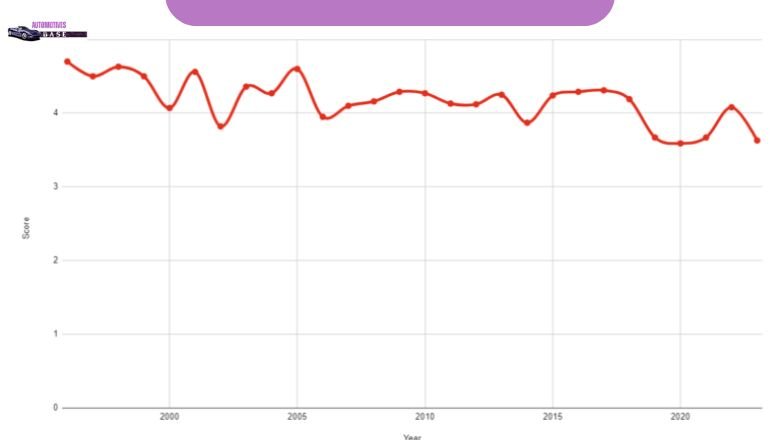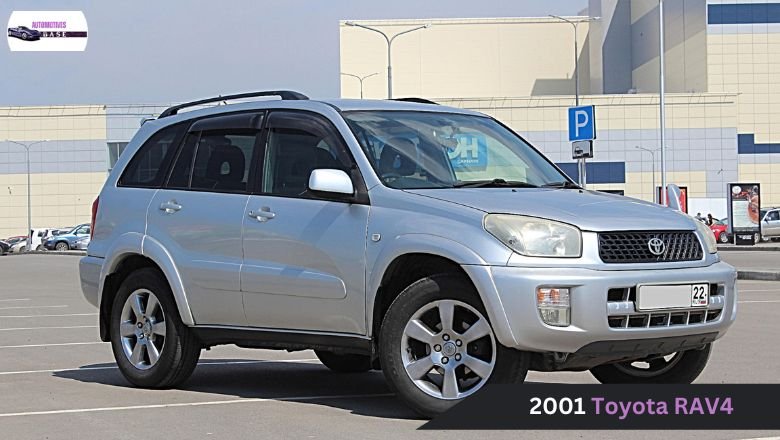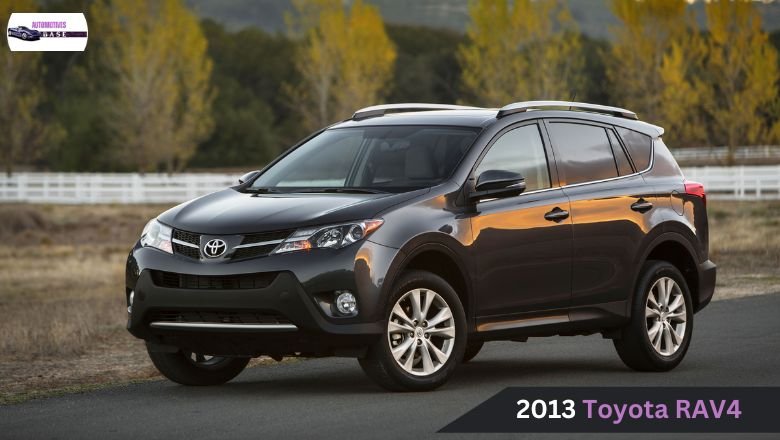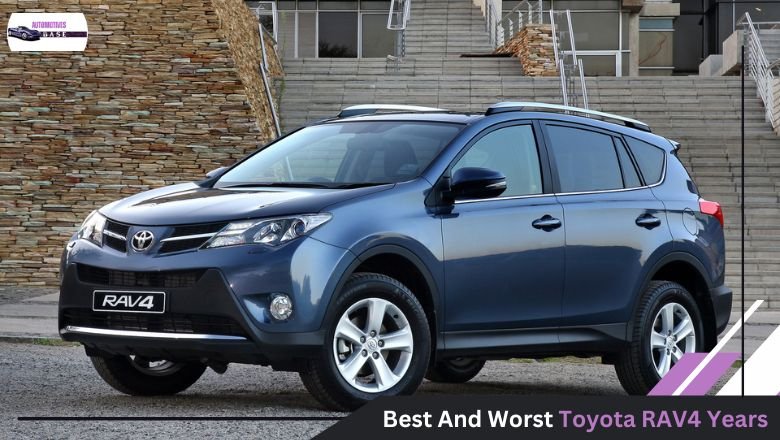We have embarked on a mission to unravel the mysteries behind the best and worst Toyota RAV4 years. With our expert insights and comprehensive breakdown, we aim to equip you with the knowledge needed to steer towards your perfect match among these beloved crossovers.
From celebrated reliability milestones to cautionary tales of unexpected setbacks, we delve deep into the annals of Toyota RAV4 best and worst to guide you towards making an informed decision.
Toyota RAV4 Generations
When looking at Toyota RAV4 generations, it is useful to consider the Toyota RAV4 best and worst years within each generation. By identifying these years, consumers can better navigate their options. There are also neutral years that don’t fall into either extreme category.
Our scoring system incorporates various factors with assigned weights to categorize the models objectively. The data used includes owner surveys to ensure a comprehensive evaluation of each year. This approach helps buyers make informed decisions based on reliable information.
| Generations | Years |
|---|---|
| Toyota RAV4 (1st generation) | 1996-2000 |
| Toyota RAV4 (2nd generation) | 2001-2005 |
| Toyota RAV4 (3rd generation) | 2006-2012 |
| Toyota RAV4 (4th generation) | 2013-2018 |
| Toyota RAV4 (5th generation) | 2019-present |
When evaluating the reliability of a car model, various factors must be considered, such as owner-reported reliability surveys, annual maintenance costs, safety ratings, and Consumer Reports scores for both reliability and owner satisfaction.
Sources like NHTSA recalls and investigations, Edmunds owner ratings, JD Power owner ratings, Kelley Blue Book owner ratings, VehicleHistory owner ratings, and Cars.com owner ratings provide valuable insights. Each factor is assigned a weight that contributes to an overall reliability score.

By analyzing these values along with the frequency of negative factors like recalls and complaints, a comprehensive assessment of the car model’s reliability can be obtained. This approach allows for a more accurate representation of the vehicle’s performance over time.
Best And Worst Toyota RAV4 Years, 1st Generation (1996–2000)
The best year for Toyota RAV4’s during the 1st generation was arguably 1996, as it marked the debut of this groundbreaking model. The innovative approach to combining comfort and off-road performance set a new standard in the industry. The worst year for the RAV4 could be considered 1998, when some models experienced issues with engine performance and reliability.

The first-generation Toyota RAV4 hybrid maintained a strong reputation for its durability and versatility. It became a popular choice for urban commuters seeking a vehicle that could handle occasional off-road adventures. Its compact size made it easy to maneuver in tight spaces while still offering ample cargo capacity for daily use.
Best Year RAV4: 1996 and 1998
The best RAV4 years were 1996 and 1998, when a compact SUV revolutionized its segment. Introduced in 1996, the RAV4 set a new standard with its innovative design and car-like driving experience. Drivers could choose between a powerful 2.0L four-cylinder engine or a more fuel-efficient 1.8L option, catering to different preferences.
In 1998, Toyota upped the ante by enhancing the safety features of the RAV4. Dual front airbags and anti-lock brakes were added, prioritizing the well-being of passengers and providing peace of mind for drivers. Improvements like restyled headlights were introduced to keep the RAV4’s look fresh and modern.
These updates solidified the RAV4’s position as a top contender in the SUV market, appealing to consumers looking for a versatile vehicle that blended performance, safety, and style seamlessly. The years 1996 and 1998 truly stood out as some of the best in terms of advancements and enhancements for the iconic Toyota RAV4 model.
The Neutral Year: 1997
In 1997, the RAV4 underwent minimal changes as it marked a transition year for the model. Lacking significant upgrades, it successfully maintained the strengths of its predecessor. One notable feature was its innovative unibody construction, which blended car-like handling with SUV versatility.
Powered by a reliable 2.0L four-cylinder engine, the 1997 RAV4 offered a good mix of performance and fuel efficiency. Some reliability issues marred its reputation at first, but these were addressed by Toyota in subsequent years. This model year served as a foundation for further improvements and innovations in the RAV4 lineup.
The neutral stance of the 1997 RAV4 reflects a period of stability before more significant changes were introduced in later iterations. With its solid foundation and adaptability to consumer needs, this model laid the groundwork for future successes within the SUV segment.
The Worst Years: 1999 and 2000
The years 1999 and 2000 marked a challenging period for the RAV4 models. Their solid foundation from the previous generation, advancements in technology, and interior comfort were lacking compared to rivals. In an ever-changing SUV market, these models struggled to keep up with competitors in innovation and features. Reports of reliability issues, notably related to transmission and engine longevity, further affected their reputation during this time.
The 1999 and 2000 RAV4 models faced criticism for falling behind in key areas such as technology and build quality. The competition was fierce, with other SUVs offering more advanced features and improved comfort for consumers. These two years stood out as particularly difficult for Toyota’s RAV4 lineup, highlighting the need for significant improvements in future models to stay competitive in the market.
Best And Worst Toyota RAV4 Years, 2nd Generation (2001-2005)
The second generation of the Toyota RAV4, which ran from 2001 to 2005, marked a significant improvement over its predecessor. Launched in 2001, this version showcased a sleek design, improved capabilities, and a more spacious interior that enhanced comfort for both passengers and drivers alike. The model incorporated advanced technology and safety features, positioning itself as a competitive choice in the compact SUV market.

In terms of standout years for the Toyota RAV4 during this period, 2003 is often regarded as one of the best. This year saw further refinements introduced into the model lineup, solidifying its position as a top contender in its category. 2005 was considered one of the weaker years for the RAV4 due to some minor quality control issues reported by consumers.
The Best Years: 2001, 2004 and 2005
The years 2001, 2004, and 2005 were significant for the RAV4 model, with notable improvements. The best-year RAV4 2001 introduced the more powerful 2.0L four-cylinder engine, which marked a turning point in performance and fuel efficiency that resonated well with consumers. By 2004, safety enhancements like standard anti-lock brakes and an available stability control system had elevated the model’s safety features.
Continuing the trend in 2005, the RAV4 underwent further refinements with optional features including a more potent 2.4L four-cylinder engine, advanced all-wheel-drive capabilities, and a spacious interior design. These upgrades solidified it as one of the most comprehensive compact SUVs available at the time.
The Worst Years: 2002 and 2003
The years 2002 and 2003 were particularly rough for the RAV4 models. Customers faced serious reliability issues that tarnished the cars’ reputation. Reports of automatic transmission failure were widespread, causing major concerns among owners. These models had attractive features similar to those of other RAV4s, but their mechanical problems overshadowed any positives.
It is advisable to avoid purchasing an RAV4 from these specific model years due to the prevalent transmission issues and TOYOTA RAV4 Gas Tank Size issues. The impact of these problems on consumer trust was significant, leading to a decrease in sales and overall satisfaction with the brand.
Efforts to address these issues, the damage was already done to the reputation of the 2002 and 2003 RAV4s. The potential buyers should consider later model years or explore alternative options within Toyota’s lineup for more reliable choices.
Best And Worst Toyota RAV4 Years, 3rd Generation (2006-2012)
The Toyota RAV4’s third generation marked a substantial evolution for the popular SUV. The introduction of this generation in 2006 saw significant changes that pushed it closer to mid-size SUV territory. Striking a balance between performance, comfort, and utility, the RAV4 catered to a broader audience than ever before. Its new exterior design refreshed the look of the vehicle and added to its appeal on the market.

Features of this generation included the availability of a robust V6 engine option, providing ample power for drivers seeking more performance. The interior also received an upgrade, offering a roomier cabin for increased passenger comfort and cargo capacity. These changes made the third-generation RAV4 a compelling choice in the competitive SUV market during its production run.
The Best Years: 2009 and 2010
The years 2009 and 2010 were significant for the RAV4 generation, showcasing notable advancements in both design and features. These models featured a refreshed exterior design and an updated interior that brought a more modern look to the vehicle. The inclusion of a rear backup camera and an optional touchscreen navigation system added convenience and safety for drivers.
Toyota continued to offer the popular V6 engine, known for its exceptional power delivery and fuel efficiency. The introduction of the RAV4 Sport variant catered to consumers seeking a more dynamic driving experience.
Equipped with sport-tuned suspension and unique styling elements, the RAV4 Sport provided enhanced performance capabilities and aesthetic appeal. The 2009 and 2010 models represented a peak in the RAV4’s evolution, offering a blend of innovation, practicality, and versatility for drivers looking for a reliable compact SUV option.
The Neutral Years: 2008, 2011, and 2012
The Neutral Years, encompassing the models from 2008, 2011, and 2012 in the RAV4 lineup, were characterized by a sense of consistency rather than radical innovation. These vehicles upheld Toyota’s reputation for quality and dependability while failing to showcase any groundbreaking advancements.
Their solid performance, they did not veer into innovative territory. They remained popular choices due to their spacious interiors, optional third-row seating for added versatility, and the continued availability of the potent V6 engine. These years marked a phase of stability and reliability for the RAV4 without ushering in any revolutionary changes.
The Worst Years: 2006 and 2007
The 2006 and 2007 RAV4 models marked a notable advancement in size and power for the vehicle. Various issues have plagued these years. The significant problem reported was excessive oil consumption, causing concerns among owners about the car’s reliability. This issue had a detrimental impact on the overall reputation of the RAV4 during those years.
There were reports of transmission problems affecting shifting performance in some vehicles during this period. This added another layer of dissatisfaction for owners who expected smooth driving experiences. These recurring issues tarnished what could have been standout years for the RAV4 lineup.
Best And Worst Toyota RAV4 Years, 4th Generation (2013-2018)
The Toyota RAV4 4th generation marked a significant shift in design from its predecessors, with a more modern look. This new design was well-received by consumers looking for a stylish and practical crossover SUV. The improved fuel economy and smoother ride quality were notable upgrades over the previous generation.

Features of this generation included the introduction of advanced safety technology, aligning with Toyota’s reputation for prioritizing driver and passenger safety. Some early models faced complaints about engine performance and transmission issues, leading to slight reliability concerns.
The Best Years: 2013, 2015, 2016, 2017 and 2018
The years 2013, 2015, 2016, 2017, and 2018 Toyota RAV4’s marked significant milestones. The 2013 model set the stage with a sleek redesign and the introduction of a fuel-efficient 2.5L four-cylinder engine paired with a six-speed automatic transmission. Building on this success, the 2015 Toyota RAV4 offered an optional technology package featuring advanced safety features like blind-spot monitoring and rear cross-traffic alert.
In 2016 Toyota RAV4 raised the bar by making its Safety Sense P suite standard across all RAV4 trims, equipping every vehicle with adaptive cruise control and a pre-collision system with pedestrian detection. The momentum continued in 2017 and 2018 with improvements to standard equipment and the addition of new trim options.
The sporty SE trim appealed to drivers seeking performance enhancements, while the ruggedly styled RAV4 Adventure offered increased ground clearance for off-road adventures.
The Worst Year: 2014
The year 2014 was a challenging one for the RAV4, even amidst the success of its fourth generation. One of its major setbacks was the prevalent issues with interior accessories and the infotainment system. Many consumers found these features to be slow and unresponsive, causing frustration during daily use.
The reliability of the engine and transmission was affected by these reported problems, which affected the overall satisfaction with the vehicle. As a result, 2014 Toyota RAV4 became known as one of the worst years for the RAV4 model due to these key shortcomings. The tarnished reputation hindered what could have been a great year for this otherwise popular SUV.
Toyota RAV4 Best And Worst Years, 5th Generation (2019-Present)
The Toyota RAV4 5th generation marked a significant milestone for the popular compact SUV. With its rugged design and advanced technology features, the fifth-generation RAV4 sets a new benchmark in the segment. By adopting Toyota’s New Global Architecture (TNGA) platform, the RAV4 showcased enhanced ride quality, stability, and efficiency.

The best year for the Toyota RAV4 5th generation was undoubtedly its debut year in 2019. The positive reception from critics and customers alike solidified its position as a top contender in the compact SUV market.
Best Years For Toyota RAV4: 2022 and 2023
The 2022 and 2023 Toyota RAV4 models are considered the best years of this generation due to their advancements in safety and technology. In 2022, a major refresh brought a more powerful and efficient hybrid system, along with the debut of the RAV4 Prime plug-in hybrid option. The 2023 Toyota RAV4 hybrid model improved upon this by offering a refined infotainment system with enhanced connectivity and user-friendly controls.
Both years emphasized Toyota’s dedication to safety by including advanced driver-assistance systems as standard features like forward collision warning, automatic emergency braking, lane departure warning, and adaptive cruise control. These models truly showcase Toyota’s commitment to innovation and excellence in the automotive industry.
The Worst Years: 2019, 2020 and 2021
The initial years of 2019, 2020, and 2021 were challenging for some customers due to teething problems with the new fifth-generation changes. Issues arose with the infotainment system, which faced connectivity problems and lacked intuitive controls, according to customer feedback. The other concern was reported with some RAV4 models’ eight-speed automatic transmission, which intermittently showed harsh or uncertain shifting behavior.
These models remained competitive in the market thanks to their advanced safety features and fuel-efficient powertrain options. The manufacturers worked diligently to address these issues through software updates and improved quality control measures in subsequent production batches.
Toyota RAV4 Average Resale Values
Many buyers consider the vehicle’s resale value, which can give insight into its long-term value retention. By looking at the average resale values of different model years of the Toyota RAV4, potential buyers can make informed decisions about their purchase.

Newer models may have higher resale values due to their advanced features and technology.
Conclusion
To evolve to meet the changing needs of consumers, we analyzed the best and worst Toyota RAV4 years. If you have been a long-time fan of the RAV4 or have recently become interested in this versatile SUV, it’s important to reflect on your personal experiences with the vehicle. Share your thoughts on what sets your RAV4 apart from others or any challenges you may have faced.
FAQ`s
Are RAV4 Expensive To Maintain?
Maintaining a Toyota RAV4 is relatively affordable compared to other popular SUV models, with an estimated cost of $5,531 for maintenance and repairs over the first 10 years of service. This amount is significantly lower by $3,602 when compared to industry averages. The likelihood of needing a major repair within this period is 16.08%, which is notably better by 5.42% than other comparable vehicles in the same segment.
Is A RAV4 Fuel Efficient?
The 2023 Toyota RAV4 is known for its impressive fuel efficiency. With an EPA-estimated mpg reaching up to 35 miles per gallon, it stands out as a fuel-efficient option in the SUV market. The Toyota RAV4 Hybrid takes this efficiency a step further, offering even better mpg estimates. At Toyota 101, we are proud to showcase the excellent gas mileage of the latest RAV4 models.

